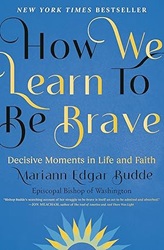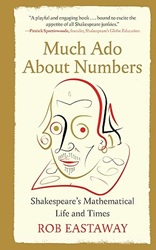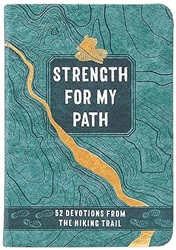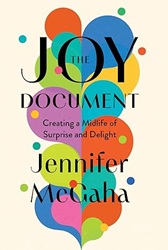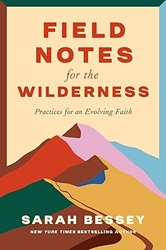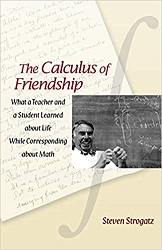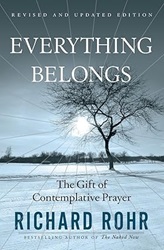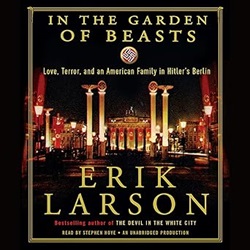Review of How We Learn to Be Brave, by Mariann Edgar Budde
Decisive Moments in Life and Faith
by Mariann Edgar Budde
Avery (Penguin Random House), 2023. 201 pages.
Review written April 7, 2025, from my own copy, ordered via Amazon.com.
Starred Review
Mariann Edgar Budde is the Episcopal Bishop of Washington who asked Trump to his face in an inaugural service to have mercy on people. When I was commenting on that, one of my friends asked if I’d read her book – written after she spoke out about Trump’s photo op in front of her church during the Black Lives Matter protests. So I ordered a copy right away.
In the Introduction, she talks about a moment during the BLM protests when she was inspired by the words of Reverend Dr. William J. Barber II, cochair of the Poor People’s Campaign.
As he spoke, the weight I had been carrying all week fell off my shoulders, and in that moment, I knew my place in the larger struggle for justice. I heard myself say to God and to the universe, “I want to be among the coalition of the faithful. I want to be among those working for the change we need now.” That’s the decision with which I need to align my life every day. It wasn’t a new thought for me, but I felt it in a new way. It won’t always burn in my heart the way it did that week, but I don’t want to forget it. Like everyone else, I need grace, courage, and perseverance to be true to my decisive moment after the passion fades.
The theme of the book is decisive moments, and how we can make brave choices during decisive moments.
The chapters take us through “Deciding to Go,” “Deciding to Stay,” Deciding to Start,” “Accepting What You Do Not Choose,” “Stepping Up to the Plate,” “The Inevitable Letdown,” and “The Hidden Virtue of Perseverance.” So you see, we get all aspects of bravery beyond any big public decisions, and I like the way it builds to day-to-day work of keeping on. She illustrates the book with her own journey that eventually took her to Washington, D. C.
Some of our decisive moments require action; others, acceptance. Some are dramatic and there for all the world to see; others are internal, known only to the self and to God. Ultimately, what I want to communicate in these pages is that heroic possibilities lie within each of us; that the inexplicable, unmerited experience of God’s power working through us is real; and that we matter in the realization of all that is good and noble and true. We can learn to be brave.
And of course this book is all the more applicable during a second Trump term. May we as Christians rise to the moment.
Here’s how she ends the book:
My prayer is that, by grace, we all will be emboldened to lean into the wisdom, strength, power, and grace that come to us, whenever we find ourselves at a decisive moment. May you and I dare to believe that we are where we are meant to be when that moment comes, doing the work that is ours to do, fully present to our lives. For it is in this work that we learn to be brave.
mariannbudde.com
penguinrandomhouse.com
Find this review on Sonderbooks at: www.sonderbooks.com/Nonfiction/how_we_learn_to_be_brave.html
Disclosure: I am an Amazon Affiliate, and will earn a small percentage if you order a book on Amazon after clicking through from my site.
Disclaimer: I am a professional librarian, but the views expressed are solely my own, and in no way represent the official views of my employer or of any committee or group of which I am part.
What did you think of this book?
